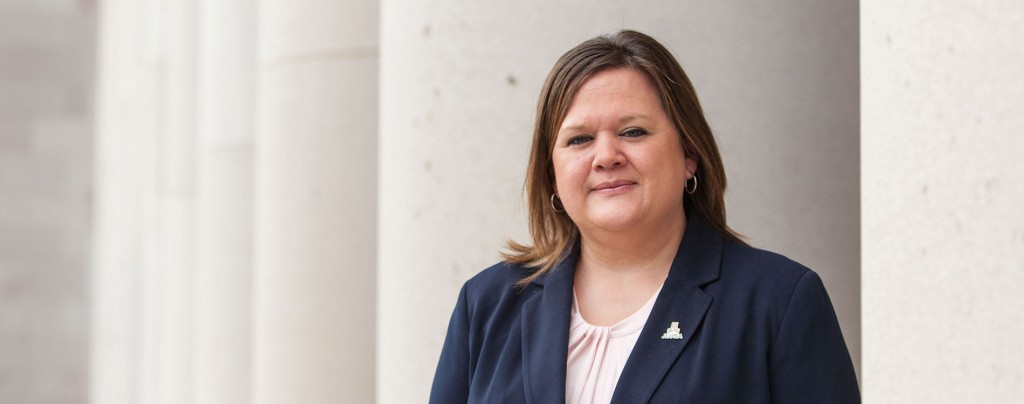Page 357 • (3,587 results in 0.101 seconds)
-
students’ working relationship with faculty members helps students become entrenched in their studies. Through student-faculty research, students incorporate their own experiences with academia in a way that Lewis says improves critical thinking, writing and understanding of students’ subjects of interest. Cynthia Waite '20 Waite’s project, a study of faculty-student mentoring, caught the spirit of the day. Psychology Professor Wendelyn Shore, an expert on the topic, was Waite’s mentor, and was
-
era.School of the ArtsDate and Artist: 1988; Tom Torrens See it: Located on the western entry of upper campus. “The School of the Arts” sign is a combination of materials including neon letters that spell out “arts”. This is sculpture was commissioned by the School of Arts now the College of Professional Studies and is approximately eight feet long and eight feet high.Generations of OakDate and Artist: October 26, 1995; Kathryn Wold (Sparks) See it: Located on lower campus below the music center. The
-

applied (for the bar).” Simmons went all in on that bet. She met with Shon Hopwood, a lawyer and author of “Law Man: My Story of Robbing Banks, Winning Supreme Court Cases, and Finding Redemption.” Hopwood graduated from the University of Washington Law School after serving time for crimes he committed. “He said ‘you absolutely can (become a lawyer),’” Simmons recalled, “and he told me exactly how to do it.” And she did. Just as she did during her time at PLU, Simmons leaned into her studies and then
-
, Simmons leaned into her studies and then some. She got to know legislators in Olympia, working on criminal justice reform. She did internships, externships and other work that far exceeded the status quo. Strait and Simmons were confident when they brought the body of work to the Washington State Bar Association Character and Fitness Board for review, ahead of her bar application. “He said in all of his life he had never seen a record of rehabilitation like mine,” Simmons said. “He felt really, really
-
Course Descriptions GNUR 640 : ENP Procedures Provides the Emergency Nurse Practitioner student with a range of diagnostic and interventional skills used in urgent care and emergency settings; including, the ability to understand, manage, and safely perform these procedures. (2) (2 credits lab/seminar) GNUR 641 : ENP I: Lifespan Emergency Care This course covers the skills of assessment, interpretation of diagnostic studies, interventions, and treatments unique to the Emergency Nurse
-
Course Descriptions GNUR 640 : ENP Procedures Provides the Emergency Nurse Practitioner student with a range of diagnostic and interventional skills used in urgent care and emergency settings; including, the ability to understand, manage, and safely perform these procedures. (2) (2 credits lab/seminar) GNUR 641 : ENP I: Lifespan Emergency Care This course covers the skills of assessment, interpretation of diagnostic studies, interventions, and treatments unique to the Emergency Nurse
-
Requirements form. Instructions are provide on the form. How does a student receive a waiver or substitution of a graduate school requirement?To request a waiver or substitution of a graduate school requirement, the student must complete the Graduate Studies Petition Form. The form must be signed by the instructor or advisor, concentration coordinator and program dean. Final approval for any waiver or substitution is through the dean of graduate studies. GradesWhat are the approved grade options at PLU?The
-

growing field with dynamic career opportunities. As a PLU Kinesiology major, you’ll have options to pursue the area(s) that interest you most and be well-prepared for graduate studies or careers in physical education, exercise science, physical therapy, athletic training, sport psychology, recreation, public health, personal training, promotions and management, youth programming, coaching, and more. PLU’s Kinesiology department offers two degrees – the Bachelor of Arts (BAK) includes options in Health
-
through a Woman’s Eye: Yoruba Religious Tradition and Gender Relations.” Journal of Feminist Studies in Religion Vol. 20, No. 1 (2004): 41-60. Omari-Obayemi, Mikelle S. “An Indigenous Anatomy of Power and Art: A New Look at Yoruba Women in Society and Religion.” Dialectical Anthropology Vol. 21, No. 1, Nigeria (1996): 89-98. Pitt Rivers Museum Body Arts. “Scarification in Nigeria.” Pitt Rivers Museum. http://web.prm.ox.ac.uk/bodyarts/index.php/permanent-body-arts/scarification/179-scarification-in
-
JD from Wayne State University Law School, and a BA from University of Michigan. She is a recipient of a National Endowment for the Arts Creative Writing Fellowship, was a John Gardner Fiction Fellow at the Bread Loaf Writers Conference, and received fellowships from Ragdale and Vermont Studio Center. In addition to teaching in the Rainier Writing Workshop, Renee teaches at University of Puget Sound, where she is an associate professor of African American Studies and contributing faculty to
Do you have any feedback for us? If so, feel free to use our Feedback Form.


